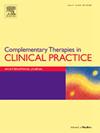Therapeutic effects of dry needling for patellofemoral pain syndrome: a systematic review and meta-analysis
IF 2.2
3区 医学
Q2 INTEGRATIVE & COMPLEMENTARY MEDICINE
引用次数: 0
Abstract
Background and purpose
Dry needling has been increasingly used as an adjunctive therapy for patellofemoral pain syndrome in clinical practice. This study aimed to summarize the available evidence about the effects of dry needling in managing patellofemoral pain syndrome.
Methods
Seven English-language databases and three Chinese-language databases were searched. Two researchers independently screened the literature, extracted data, and assessed the risk of bias using the PEDro scale and the Cochrane Risk of Bias Assessment Tool. The quality of evidence was evaluated using the GRADE approach.
Results
A total of 12 studies were included, involving 624 participants. Dry needling significantly improved knee pain (MD = −0.86, 95%CI -1.17 to −0.55) and physical function (MD = 5.33, 95%CI 3.88 to 6.78) compared to comparative groups. When combined with exercise therapy, dry needling resulted in large reduction in knee pain(MD = −2.02, 95%CI -2.36 to −1.67) and small improvement in physical function (MD = 9.56, 95%CI 7.84 to 11.27) compared to exercise therapy alone. However, negligible or no additional benefits were observed when dry needling was added to extracorporeal shock wave therapy or multimodal interventions. Furthermore, dry needling showed no significant advantage over other trigger point therapies in terms of pain reduction and functional improvement.
Conclusion
Dry needling is effective in reducing pain and improving function for patients with patellofemoral pain syndrome, particularly when combined with exercise therapy. However, more high-quality studies are required to draw a definitive conclusion.
Clinical trial registration number
CRD42023490627 on PROSPERO.
干针治疗髌骨痛综合征的疗效:一项系统综述和荟萃分析。
背景与目的:临床上越来越多地使用干针作为髌股痛综合征的辅助治疗方法。本研究旨在总结有关干针治疗髌股疼痛综合征的现有证据。方法:检索7个英文数据库和3个中文数据库。两名研究人员独立筛选文献,提取数据,并使用PEDro量表和Cochrane偏倚风险评估工具评估偏倚风险。使用GRADE方法评估证据质量。结果:共纳入12项研究,624名受试者。与对照组相比,干针明显改善了膝关节疼痛(MD = -0.86, 95%CI -1.17 ~ -0.55)和身体功能(MD = 5.33, 95%CI 3.88 ~ 6.78)。当与运动疗法联合使用时,与单独运动疗法相比,干针疗法可显著减轻膝关节疼痛(MD = -2.02, 95%CI -2.36至-1.67),并可轻微改善身体功能(MD = 9.56, 95%CI 7.84至11.27)。然而,当干针加入体外冲击波治疗或多模式干预时,可忽略或没有观察到额外的益处。此外,在减轻疼痛和功能改善方面,干针疗法与其他触发点疗法相比没有明显的优势。结论:干针治疗髌骨股痛综合征能有效减轻疼痛,改善功能,特别是与运动疗法相结合。然而,要得出明确的结论,还需要更多高质量的研究。临床试验注册号:CRD42023490627。
本文章由计算机程序翻译,如有差异,请以英文原文为准。
求助全文
约1分钟内获得全文
求助全文
来源期刊

Complementary Therapies in Clinical Practice
INTEGRATIVE & COMPLEMENTARY MEDICINE-
CiteScore
6.30
自引率
6.70%
发文量
157
审稿时长
40 days
期刊介绍:
Complementary Therapies in Clinical Practice is an internationally refereed journal published to meet the broad ranging needs of the healthcare profession in the effective and professional integration of complementary therapies within clinical practice.
Complementary Therapies in Clinical Practice aims to provide rigorous peer reviewed papers addressing research, implementation of complementary therapies (CTs) in the clinical setting, legal and ethical concerns, evaluative accounts of therapy in practice, philosophical analysis of emergent social trends in CTs, excellence in clinical judgement, best practice, problem management, therapy information, policy development and management of change in order to promote safe and efficacious clinical practice.
Complementary Therapies in Clinical Practice welcomes and considers accounts of reflective practice.
 求助内容:
求助内容: 应助结果提醒方式:
应助结果提醒方式:


